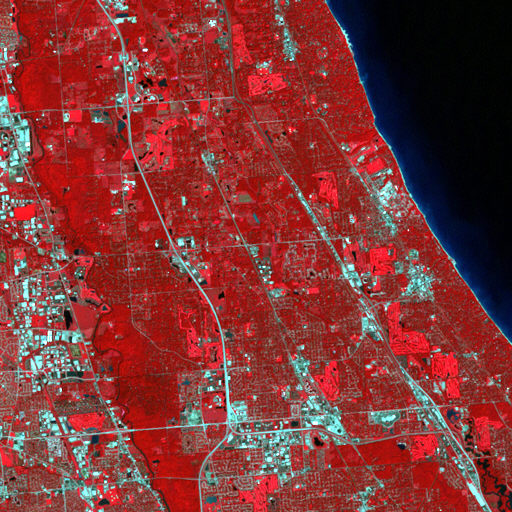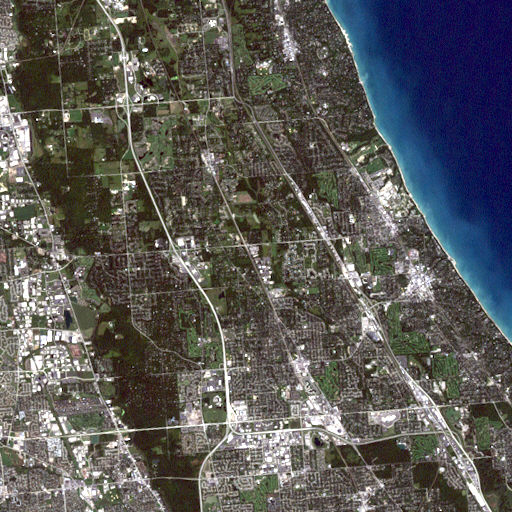
Highland Park GLOBE Workshop
June 20, 2005 in Room G105
Workshop Participant Introductions
|
I
currently serve as the science department chair at Shannon |
|
Hi
– I am Kate and I am finishing my 2nd year teaching at Thanks, Kate J |
|
Hi
there!
I
am a science teacher at Highland Park High School. I teach both
Chemistry and Environmental Science and have been teaching for 7 years
(finishing my fifth here at HPHS). I just recently completed my
Masters in Geography and Environmental Studies with my thesis on the
population dynamics of the Eastern Bluebird in Wisconsin.
Both
of the courses that I teach would certainly lend themselves to the
GLOBE project. It will be very exciting to be able to tap into the
resources that this program offers kids.
My
wife and I have two beautiful little girls... 2 and 1/2 years and an
eight month old. We love to backpack, sea kayak and work on converting
an abandoned farm in Wisconsin back to prairie and oak savanna (ala
Aldo Leopold without writing an Almanac)
See
you Monday!
Howie
|
|
As
always I am running behind trying to catch up with everything and
everybody here in the intensive scheduling at the end of my first year
at
Today I am feeling exited and at the same time worried, my son Alejandro
just left for
I look forward to meet all of you and learn more about Globe, Best, Ana
|
|
My name is Dr. Abdel Azim Elsiddig, of the " Bridges"
Program. It is a multi-level family, school and community education
program. My role as founder and director is to look for opportunities
of growth through other programs and organizations inside the USA and
across the Globe. We have recently visited some countries where we
successfully introduced Bridges. I'll not be directly involved in
the teaching process as my role is more of envisioning, planning, supervision
and directorship. My dream is to work with "Globe" inside
the US and abroad where we will have a good number of private and
Islamic schools willing to become part of GLOBE. If you
see that as a good potential for both of us, I'll be willing
to meet and work with/through you in the future at that
level. I'll definitely help in bringing both parties (our schools and
Globe) together in a wonderful partnership. Our science teachers from
different schools will then be involved at the level you're
talking about to us now while I'll help at other levels of public
relations, administration and supervision. Looking forward to
learning with all of you.
|
| Roy |
|
|
| I am a retired Chicago Public School Teacher. My Randolph students
sent in over 8000 measurements and observations to the GLOBE program. I
have been a GLOBE teacher trainer since 1995. I have played hockey every
Friday Night with my friends, sons and grandsons for the past 25
years. My streak will come to an end this fall, because I will
have a new hip installed on July 11. For more information on me,
please visit my web site at: http://www.lopatka.net/
GLOBE Trainer Greg Lopatka |
| Assignment #1 Introduce yourself to the group. |
|
Assignment #2 was visit the protocols page
Please check out the following GLOBE protocols that are
available for you and your students. As a GLOBE trainer we
found that it was difficult to cover all of them in a 6 day
workshop.
Please check them out and let me know which ones that
might fit into your program.
You can find them by going to: http://www.globe.gov/ then
click on Enter
the GLOBE Site then go to the EDUCATION
& SCIENCE section on the left site of the page and select Protocols
If you do all of the above, you should come to the protocols page
|
|
Assignment #3
Use your School ID with the password to
log into the GLOBE website at: http://www.globe.gov/
That will allow you to practice data entry on the practice site.
When you have logged in, click on Data
Entry on the left side of the GLOBE site
that will take you to the data entry site that you will be using
once you are GLOBE certified. If you click on the Practice
Data Entry link, it will take you to a site that will
allow you to enter practice data.
First you must define a site, before you can send data, so that
GLOBE knows where the data is coming from. I just defined a
site for Highland Park called WTS you may use that site to enter
atmospheric data like clouds or temperature.
|
|
Assignment #4 You will need the
password to go along with the School
User ID that I gave yesterday.
When you Define a site, you
should use a date that precedes the date of your first data
entry.
I am giving you temperature
data for June 6, 7, 8, and 9th. So if you define your site
with today's date, it will not accept the data from the 6th, 7th and
8th.
You can eliminate that problem
by using June 5th as the date that your site was defined.
Here is some data that you can
enter. Try entering it one day at a time, starting on June
6. The data base will not accept a minimum or maximum
temperature if you didn't enter a current on the previous day, you
can try, but it will probably kick out the Min/Max for June 6th.
When you enter the data
correctly, you will get a big smile face. If you goof up,
you will get a message telling you what is wrong. For
example, if you enter a current temperature that is higher
than your Max, it will let you know and you won't get a smile face
until you correct it.
*These temperatures were taken
with a Taylor digital Min/Max thermometer
|
|||||||||||||||||||||||||||||||||||||||||||||||||||||||
|
Assignment # 5
Try entering the following cloud data:
At 17:06 on June 13, We had broken cloud cover, with Cumulonimbus and Nimbostratus clouds present. We had 2 short lived Contrails. |
|||||||||||||||||||||||||||||||||||||||||||||||||||||||
| The Following images of the Highland Park area were generated by the LANDSAT Satellite. The LANDSAT Project is the longest-running enterprise for acquisition of moderate resolution imagery of the Earth from space. The LANDSAT 1 satellite was launched in 1972; the most recent, LANDSAT 7, was launched in 1999. The instruments on the LANDSAT satellites have acquired millions of images. These images form a unique resource for applications in agriculture, geology, forestry, regional planning, education, mapping, and global change research. GLOBE will send a LANDSAT image of each GLOBE School to the GLOBE teacher. Go to USGS Landsat site |

Using Bands 4,3,2 (infrared)

Using Bands 3,2,1 (Natural Color)
GLOBE Protocols

 |
|
Links
Charleston
West Chester PA October, 2000
Park Ridge IL, September, 2005
GLOBE Program: http://www.globe.gov
GLOBE Hydrology Study:
http://www.geocities.com/glopatka/ranhydro2.html
Type in your address and see your house from outer space.
http://www.terraserver-usa.com